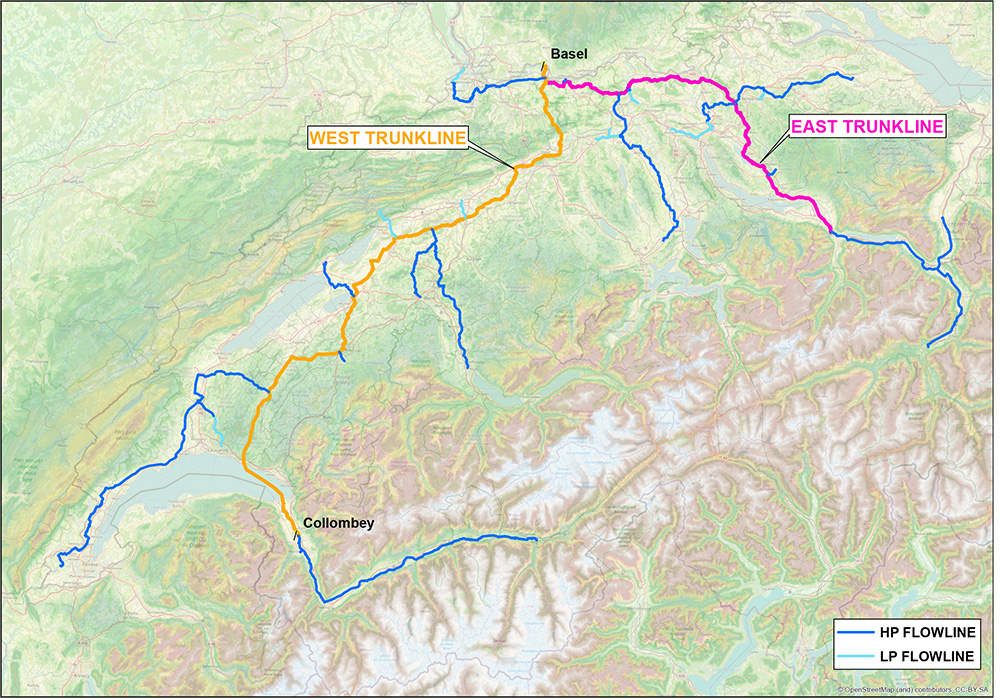#3 Blog
How a CO2 pipeline network in Switzerland could be governed and financed

July 2023 – by Oliver Akeret & Martynas Bagdonas, Sustainability in Business Lab at ETH Zurich
In August 2022, for the first time ever, CO2 captured from a waste-water treatment plant in Switzerland was transported to Iceland for injection and mineralization in geological formations underground in the context of the pilot project DemoUpCARMA.
The choice of Iceland as a storage site, which significantly extends the length of the transport route, is no coincidence. Research projects have shown limited potential for storing CO2 in geological storage formations in the near future in Switzerland. Therefore, exploring alternative storage options is critical. After capturing the CO2 at ARA Bern, the CO2 is liquefied and loaded onto portable ISO containers with a capacity of 20 tons, which can keep the CO2 in a liquid state until arrival at the storage site. The ISO containers are transported via truck from ARA Bern to the train station in Weil am Rhein. From there, the CO2 is transported first via rail to Rotterdam and then via ship to Reykjavik. Once delivered in Reykjavik, the ISO container is transferred to the injection site via truck.
From pilot transport to scale-up
This rather complicated travel route characterizes the pilot stage of the project. In this sense, the pilot’s main goal is to prove the general feasibility of a CO2 value chain in order to already address potential techno-economic and regulatory gaps prior to scale-up and further development of such CO2 value chains. The findings from this pilot project will prove to be eminently important when considering the quantities of CO2 that will have to be captured, transported, and stored at scale in the longer term.
The Swiss long-term climate strategy estimates 7 million tons of CO2 per year will need to be captured, transported, and stored by 2050 to achieve net-zero. Even assuming that closer storage sites would be available by then, such quantities of CO2 can no longer be transported in ISO containers and with trucks, trains, or ships. In this scenario, a larger CO2 pipeline network that collects captured CO2 in Switzerland and then transfers it to a larger trans-European will be required. To plan for this, in the context of the DemoUpCARMA project, the Sustainability in Business Lab at ETH Zurich investigated different organizational and financial aspects of such a CO2 infrastructure in Switzerland, considering potential sources of funding and revenue, and who would own the pipeline network.
What would the pipeline network look like?
In 2021, Saipem and the Swiss Association of Waste Disposal Facility Operators (VBSA) conducted a study [1] analysing the feasibility and costs of a CO2 pipeline network in Switzerland. The study allows to draw initial conclusions about what such a pipeline network covering the 7 million tons of CO2 per year outlined in Switzerland’s long-term climate strategy could look like: It would span around 1,000 kilometres (see Figure 1). This network would consist of two main pipelines (east and west) with smaller flowlines connecting directly to emitters. The pipelines would converge in Basel, which could eventually link the Swiss CO2 network to a larger trans-European network. The emitters considered in this study were those that emit at least 100,000 tons of CO2 per year, which covers 32 large emitters from hard-to-decarbonize sectors such as cement or waste-to-energy.


